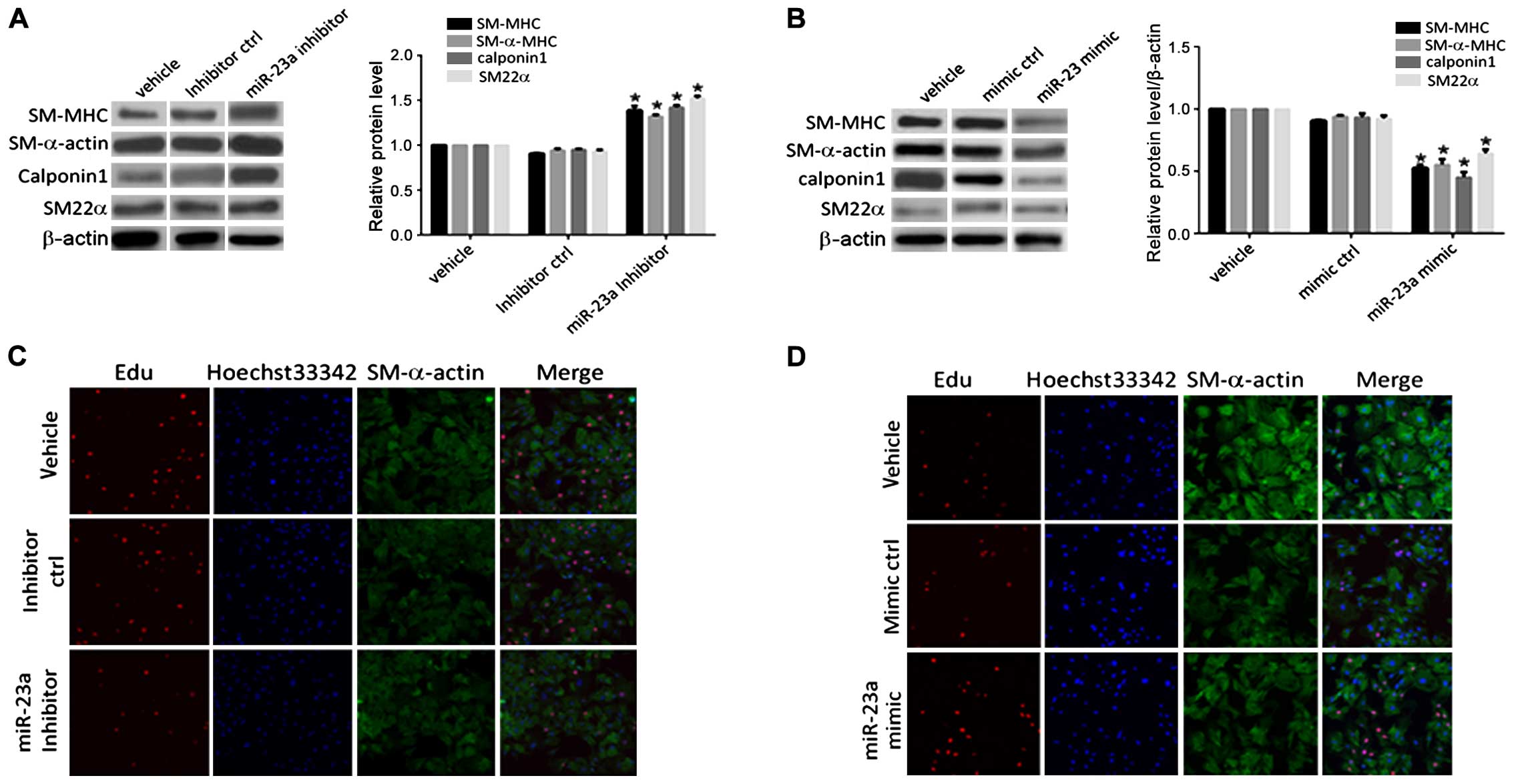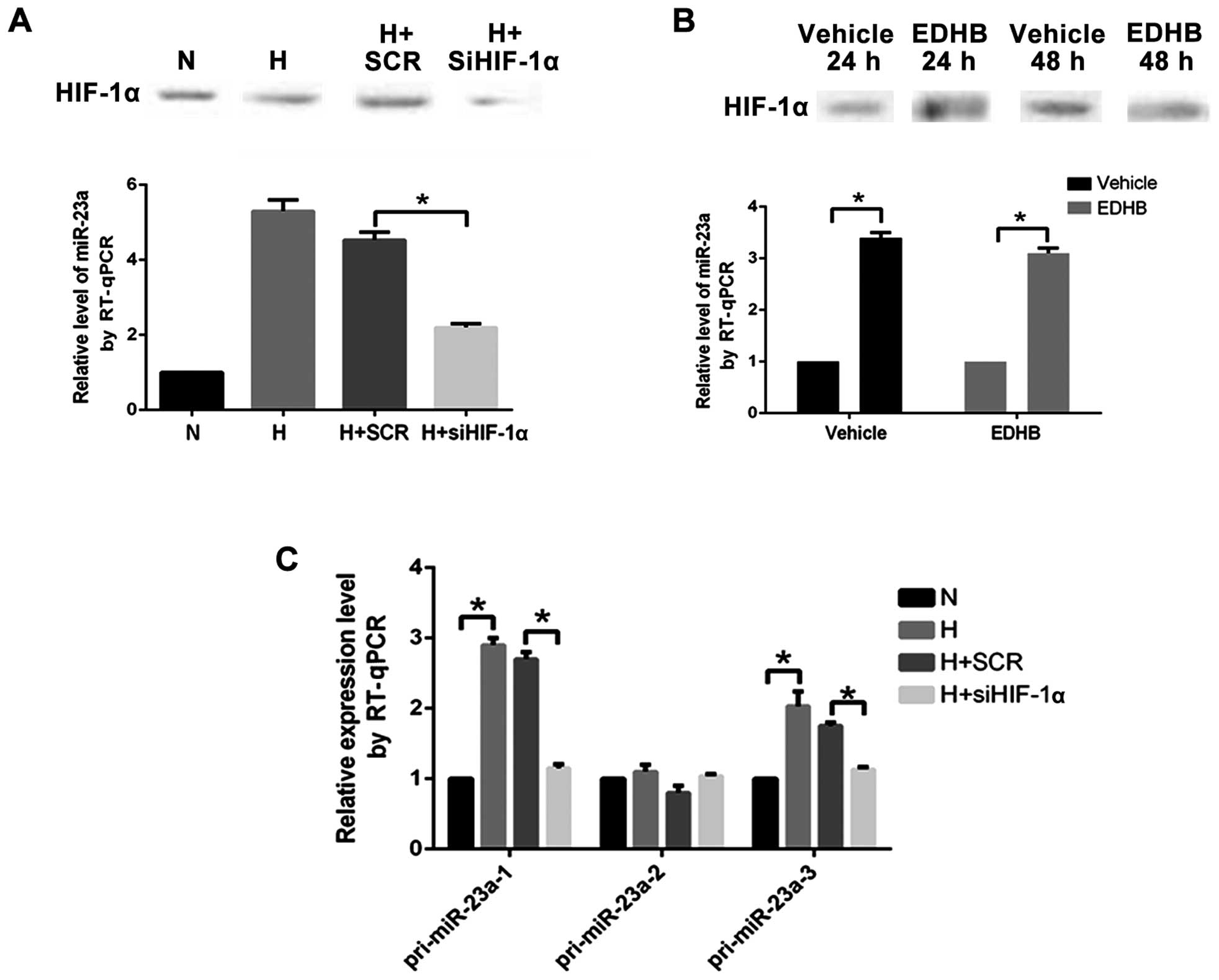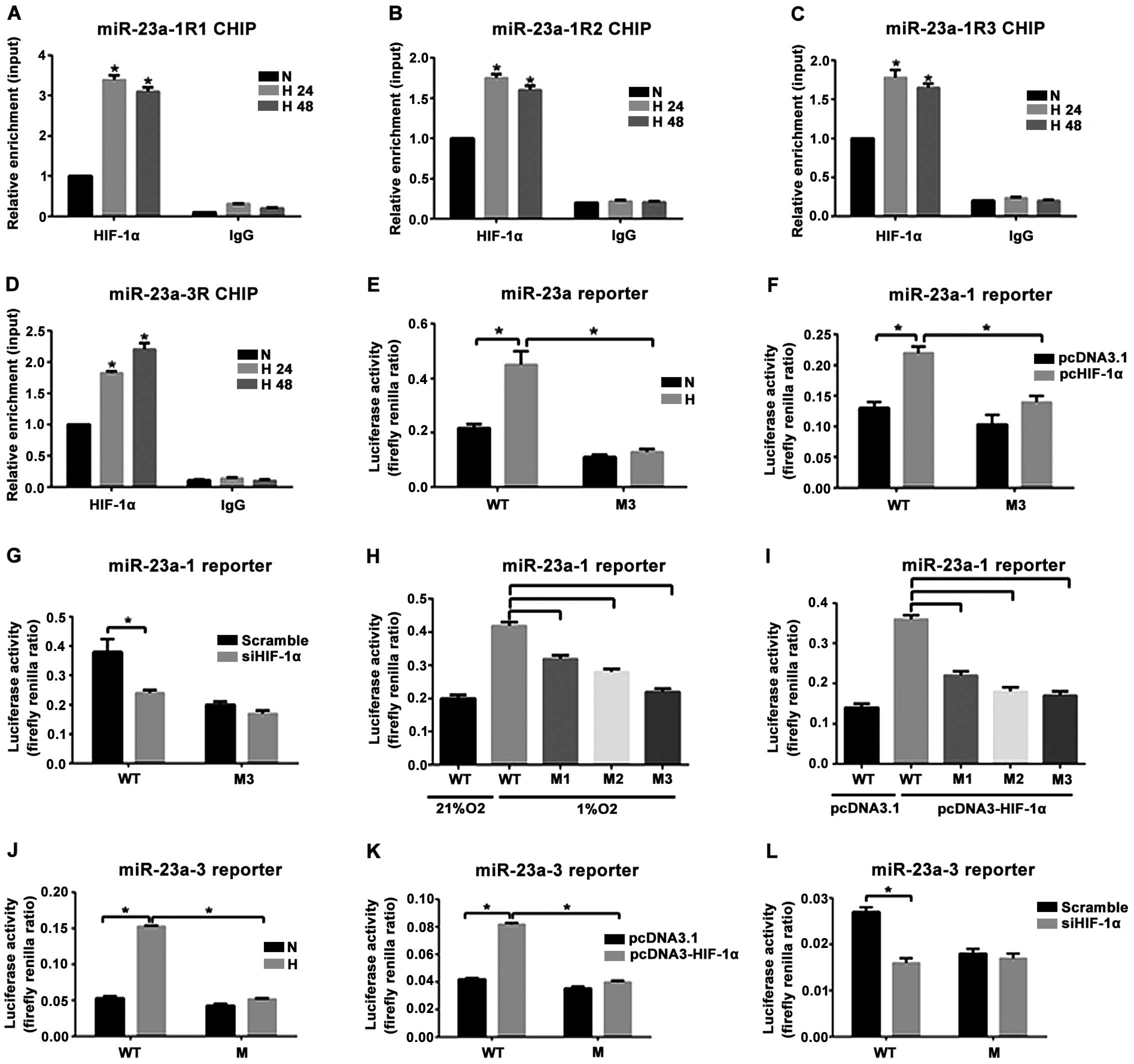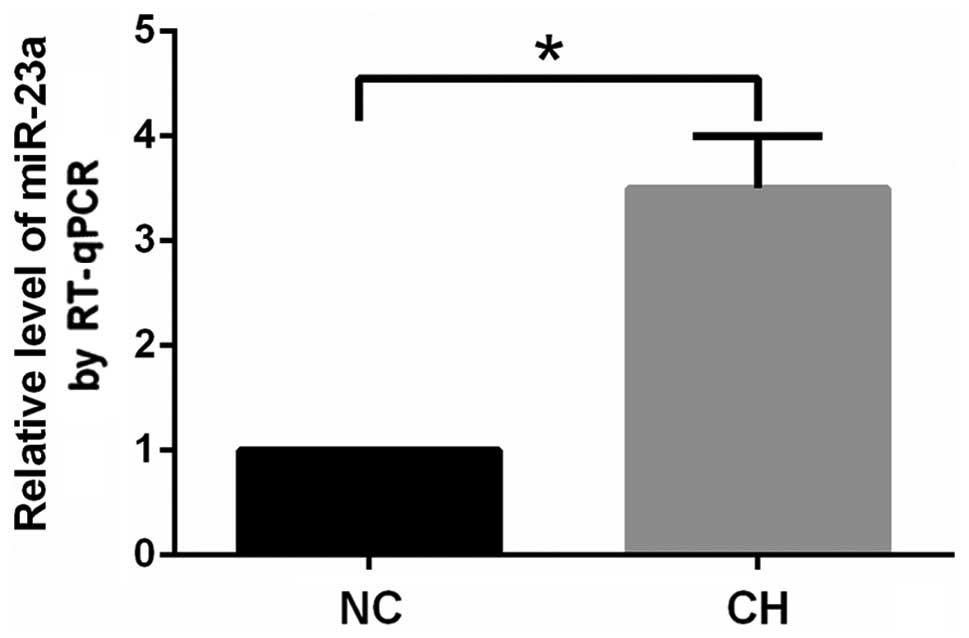Effect of miR-23a on anoxia-induced phenotypic transformation of smooth muscle cells of rat pulmonary arteries and regulatory mechanism
- Authors:
- Published online on: November 28, 2016 https://doi.org/10.3892/ol.2016.5440
- Pages: 89-98
-
Copyright: © Yan et al. This is an open access article distributed under the terms of Creative Commons Attribution License.
Metrics:
Total
Views: 0 (Spandidos Publications: | PMC Statistics:
)
Total PDF Downloads: 0 (Spandidos Publications: | PMC Statistics:
)
Abstract
We investigated the possible implication of miR-23a in anoxia-induced phenotypic transformation of the pulmonary arterial smooth muscle and studied the mechanism of upregulation of miR-23a expression in anoxia. The collagenase digestion method was used for preparing rat primary pulmonary artery smooth muscle cell (PASMC) culture. SM-MHC, SM-α-actin, calponin-1 and SM22α protein expression levels were evaluated using western blot analysis after the ASMCs were subjected to anoxia treatment (3% O2). Transfection with miR-23a mimics were conducted when PASMCs were under normoxia and anoxia conditions. EdU staining was used to detect the proliferative activity of PASMCs. Cells were transfected with HIF-1α specific siRNA under anoxia condition. RT-qPCR was used to detect miR-23a expression in PASMCs. Chromatin immunoprecipitation method was employed to verify the binding sites of HIF-1α. The dual-luciferase reporter gene was used to study the role of HIF-1 and its binding sites. Rat hypoxic pulmonary hypertension models were established to study the expression of miR-23a using RT-qPCR method and to verify the expression of miR-23a in the arteriole of the rat pulmonary. Our results showed that compared with normoxia condition, under anoxia condition (3% O2), the expression levels of the contractile phenotype marker proteins decreased significantly after 24 and 48 h. The positive rate of the EdU staining increased significantly and the expression of miR-23a increased. Transfection with miR-23a-mimic downregulated the expression of contractile marker proteins and improved the positive rate of the EdU staining under normoxia. Anoxia and transfection with HIF-1α enhanced the activity of the wild‑type Luc-miR-23a-1 (WT) reporter gene. We concluded that miR-23a participated in the anoxia-induced phenotypic transformation of PASMCs. Increased expression of miR-23a under anoxia may primarily be due to miR-23a-1 and miR-23a-3 upregulation. The anoxia-induced upregulation of miR-23a was regulated by HIF-1.















